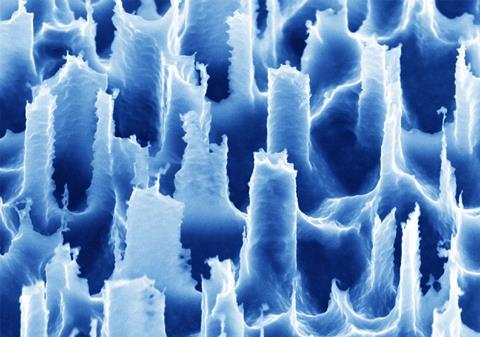Currently, taking a blood sample is the most straightforward way to measure glucose levels or detect the presence of pathogens. But Chicago-based researchers have now developed an alternative method that enables analysis of breath as a new diagnostic approach. Instead of needles, this method relies on frozen spikes.
The main problem with analysing airborne molecules is their low concentration, which makes them difficult to detect and measure. Or you need big, expensive equipment for the analysis. This is why blood samples are still required to test certain diseases or measure glucose levels. However, this is not always desirable, particularly not for vulnerable newborns and very young children. ‘This prompted research into a new method,’ says Bozhi Tian of UChicago in a press release.

The image shows the ABLE (Airborne Biomarker Localisation Engine) tool in the process of condensation. ABLE comprises several sections through which air or breath is drawn in and frozen together with water vapour. This process results in the formation of condensation spikes that are 1/200th the thickness of a human hair. This condensed mixture then slides off a smooth surface into a small reservoir. The air is now trapped in a liquid that can easily be analysed using existing, regular equipment. This new method means that it is no longer necessary to take a blood sample; simply exhaling can do the trick.
Source:
Ma, J., Laune, M., Li, P., Lu, J., Yue, J., Yu, Y., Mansur, Y., Ritwik, A. P. D., Peri, S. P., Cleary, J., Oliphant, K., Kessler, Z., Claud, E. C., & Tian, B. (2025). Airborne biomarker localization engine for open-air point-of-care detection. Nature Chemical Engineering. https://doi.org/10.1038/s44286-025-00223-9













Nog geen opmerkingen